Warning: Undefined array key "ssba_bar_buttons" in /home/robinder/public_html/wp-content/plugins/simple-share-buttons-adder/php/class-buttons.php on line 602
Warning: Undefined array key "ssba_bar_buttons" in /home/robinder/public_html/wp-content/plugins/simple-share-buttons-adder/php/class-buttons.php on line 602
Warning: Undefined array key "ssba_bar_buttons" in /home/robinder/public_html/wp-content/plugins/simple-share-buttons-adder/php/class-buttons.php on line 602
Warning: Undefined array key "ssba_bar_buttons" in /home/robinder/public_html/wp-content/plugins/simple-share-buttons-adder/php/class-buttons.php on line 602
Warning: Undefined array key "ssba_bar_buttons" in /home/robinder/public_html/wp-content/plugins/simple-share-buttons-adder/php/class-buttons.php on line 602
Warning: Undefined array key "ssba_bar_buttons" in /home/robinder/public_html/wp-content/plugins/simple-share-buttons-adder/php/class-buttons.php on line 602
Warning: Undefined array key "ssba_bar_buttons" in /home/robinder/public_html/wp-content/plugins/simple-share-buttons-adder/php/class-buttons.php on line 602
Good afternoon! A note about accessibility before I begin. If you would like to follow along with the written version of this talk, you can visit http://bit.ly/palakeynote. That link will also have the images on the slide deck with embedded descriptions for your screen reader, and the embedded video has closed captions.
I was really honored to be asked to keynote this luncheon for the Pennsylvania Library Association’s College and Research division at the PaLA annual conference… particularly because I fancy myself a parallel-universe librarian, and I know that out there through a wormhole somewhere, it is 1979 and I am using one of those thunk-thunk machines to date-stamp library book cards.
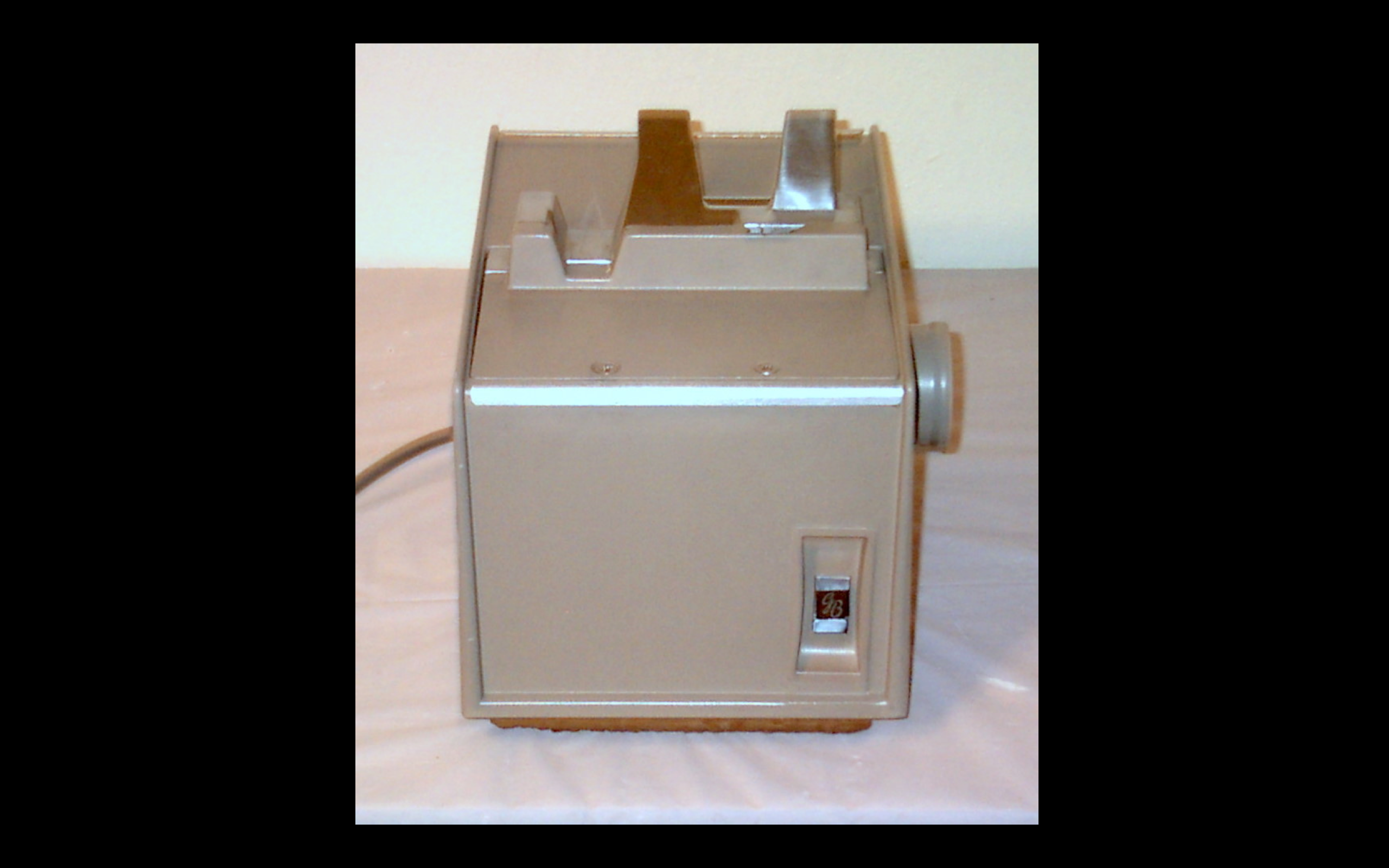
But to be honest, neither my current right-here self nor my wormhole self has much claim to insight on the future of libraries. Or even the now of libraries. And I don’t even know that much about the history of libraries. I don’t want to self-deprecate too much, but you librarians must be annoyed that so many of us fetishize your field and purport to prognosticate on its status without being fully informed or embedded.
But I do feel excited to talk at this event. Because I am in some ways very embedded in libraries. First of all, as the director of a customized major program, my office is situated in our university library, and my closest colleagues are the teaching and learning and scholarly communications folks who pop in and out of my daily orbit. Yes, I have to walk through the stacks to get to the lavatory… but beyond that, there is a sense that the work that I do with learners to design accessible pathways through education and into new knowledge is directly related to the larger mission of the library learning commons where we are housed. When I work with other institutions on interdisciplinary curriculum or open education, it’s librarians who invite me, who form the support team, and who massage the pre- and post-visit reactions between the different constituents on campus.
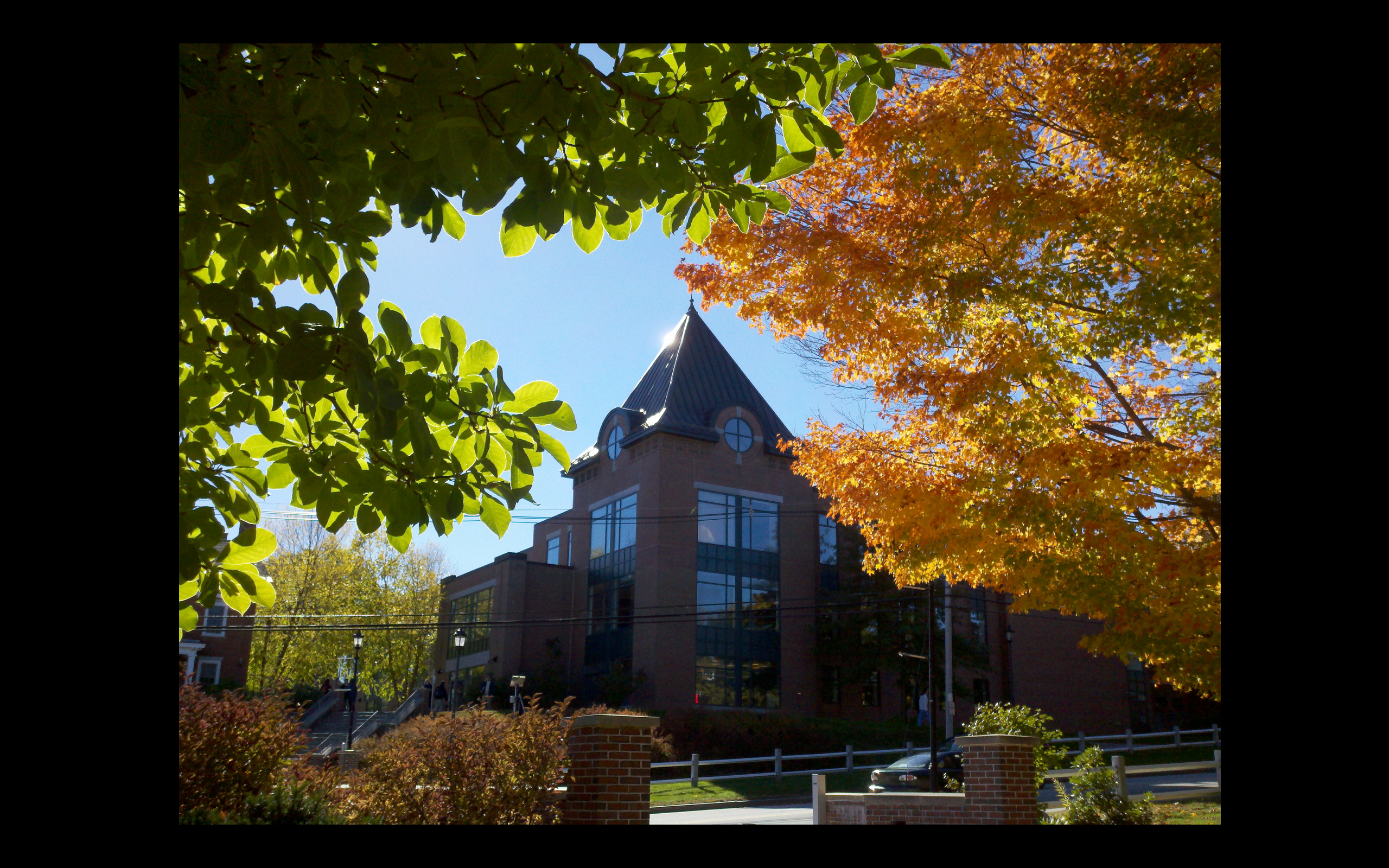
The library where I work
Basically, I am embedded inside of libraries because my work is integrally concerned with questioning the role that knowledge plays in the world, and the relationship between communities and the knowledge that they create and which creates them. For me, “education” is a manifestation of these questions.
Concepts like “education” and “knowledge” and “community” and “library” rub up against each other and create friction. For this keynote, I want to run that friction through some other prisms, to see what refracts. Yeah, I’m mixing my metaphors. The tactile nouns (education, knowledge, community, library) and the visual luminescent adjectives that orbit them (free, public, open). I’m curious about where the points of connection and tension are, because fundamentally I am interested in how we work together across the ecosystem that encompasses learning. I want to understand what we hope that ecosystem will feel and look like, the friction and light.
My first job was at the Concord Free Public Library in Massachusetts, just down the street from where Louisa May Alcott lived when she wrote Little Women. I was fourteen, and I worked as a page in the children’s room. I loved– and still love– that library. It’s got a lot of old wood, and a great library smell, and I used to read Little Women in the corner, hidden behind the book trolley, when I was supposed to be shelving books (I was a lousy page). For some reason, we often referred to that library by its full name: The Concord Free Public Library. I had no idea what it meant, and it only occurred to me recently that the name of that library is packed with enough questions to fill a keynote. I am going to loosely organize this talk around these words: Concord, Free, Public, and Library. I am going to start with FREE.
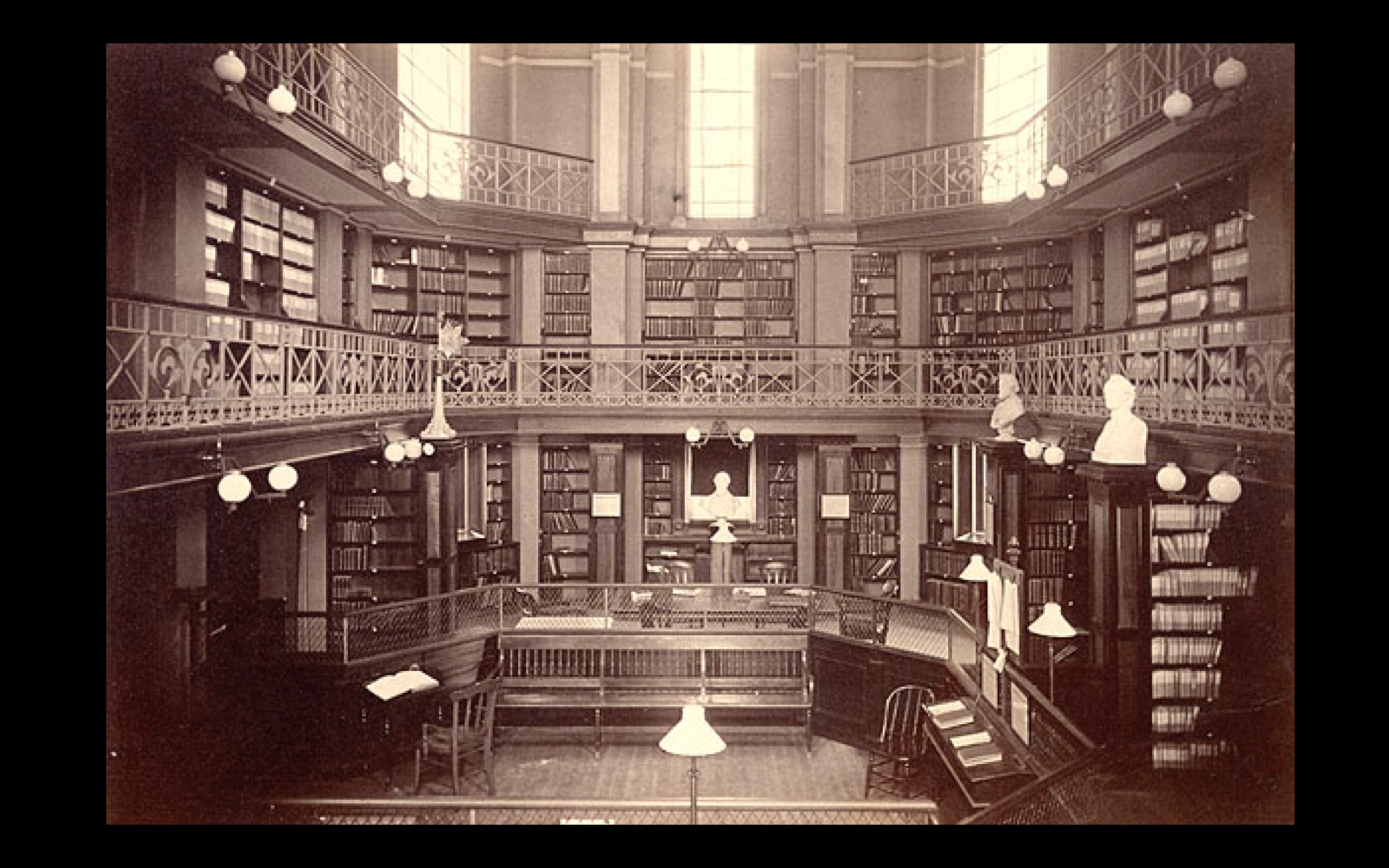
The Concord Free Public Library in 1873
FREE
In the open education community, we talk a lot about the meaning of the word “free.” We are generally interested in the distinctions between free-as-in-no-cost and free-as-in-liberated. We shorthand this as “free as in free beer” and “free as in freedom.” Which seems incredibly stupid. Freedom, ok sure. But when was the last time you had a free beer?
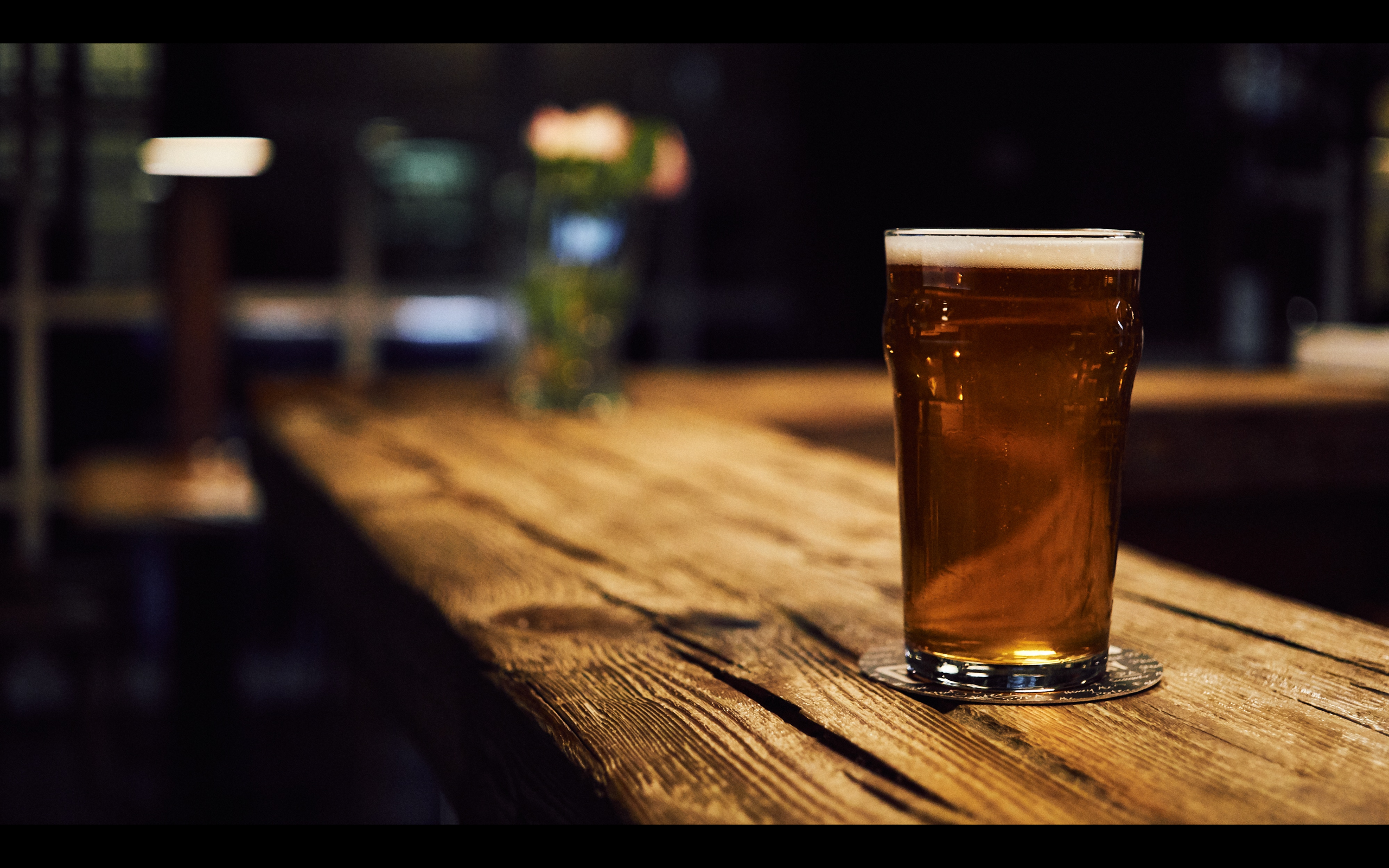
No beer is free, my friends
Students at my alma mater, Brown University, can now enjoy free coffee anytime they want at the new Shiru Café on campus; all you have to do is give the company access to several data points about you that they can sell to marketers, and YOUR COFFEE IS FREE! [Not to put too fine a point on it: I will shake my head “no” at this point in the presentation. smh]
You can count me as a proponent of free college, the movement to make tuition free at American colleges and universities (starting particularly at the community colleges). Ever since I read Sara Goldrick-Rab’s Paying the Price, it’s been clear to me that the writing is on the wall: even modest college costs are prohibitive for many families, especially when coupled with textbook costs, childcare costs, transportation costs, lost opportunity costs, and other associated costs of attendance. But the cost of delivering education and sustaining institutions is not zero, so obviously when we say “free,” we mean free to access and not free to deliver. People confuse this point all the time with Open Educational Resources, which are free to students but which take significant academic labor to generate, integrate with curriculum, host, update, etc. So “free”– even in the simpler gratis sense– is really not a simple concept. My library card at the Concord Free Public Library was free. But I also drew a salary there, and without even knowing it, I was experiencing a conceptual friction that would later become central to the questions I want to explore in my advocacy.
CONCORD
The Concord Free Public Library was totally tied to the town, my hometown. So next I want to talk about that word, “Concord.” Well-funded by Concord’s wealthy tax base that also happened to enrich itself through a tourist industry intimately tied to books and authorship (Alcott, Henry David Thoreau, Ralph Waldo Emerson, Nathaniel Hawthorne), the library is a public institution, and an institution proudly yoked to its geography. Dedicated in 1873, the library grew up in the post-Civil War north, and was famous in its earlier years for being the first institution to ban Mark Twain’s The Adventures of Huckleberry Finn (it was immoral, unfunny, had bad grammar, and was “not the sort of reading matter for the knowledge seekers of a town which boasts the only ‘summer school of philosophy’ in the universe.”) A complex constellation of historical and political dynamics inflected the library from its earliest days, as its Revolutionary War locale– situated as it is just a stone’s throw from the Old North Bridge where the famous battle of Lexington and Concord culminated– mixed with its abolitionist and Transcendentalist superstars (Thoreau, who assisted fugitive slaves as they escaped to freedom, wrote from a cabin at Concord’s Walden Pond– I spent a lot of high school nights engaged in questionable antics on that shoreline). For those of us growing up in town, the library (and its smaller Fowler branch that served West Concord, where the more generic history was less gentrifying) was the hub for summer reading, first jobs, after-school projects, and local events. Looking back on it now, I wonder how the Revolution, Huck Finn, Thoreau, the wealthy mainly-white tax base mattered (and matters) to the library. How much is the context and the history of the library tied to what the library is? This past April, a racist group calling itself “The Proud Boys of New England” had a protest in Minuteman National Park near the library, just down the street from the old homestead of Caesar Robbins, the first freed slave in Concord to own his own home; the group billed itself on Facebook as “proud Western chauvinists who, like the founding fathers of New England, refuse to apologize for creating the modern World.” The Proud Boys of New England chose Concord for its protest because of what the place represented to them. How much of the Concord Free Public Library is Concord?

Proud Boys in Concord, 2018 (photo by John Walker)
This question seems more salient these days when people are asking basic questions about whether libraries are “places” at all. Sometimes, this is in response to the fear that libraries are being “disrupted” by the internet. First of all, everything feels annoyingly disrupted by the internet. Even your refrigerator wants to be “smart” now And by “smart,” I mean that it wants to mine data from you in order to sell you things. Which, come to think about it, is a pretty resonant and scary metaphor for some of the recent trends in education, from workforce competencies that train students for low-wage, short-term, entry-level jobs in a changing labor market to vulture-like for-profit universities and shady, exploitative student loan schemes. Sometimes there’s a tinge of seepia in the pre-disrupted library, that was able to thrive in its place-i-ness. “The library is a place, and the web is everywhere,” writes David Lewis in Reimagining the Academic Library. I get it. The library is sort of stuck in time and space, whereas Google is everywhere and always, like air, like God, or like Facebook.
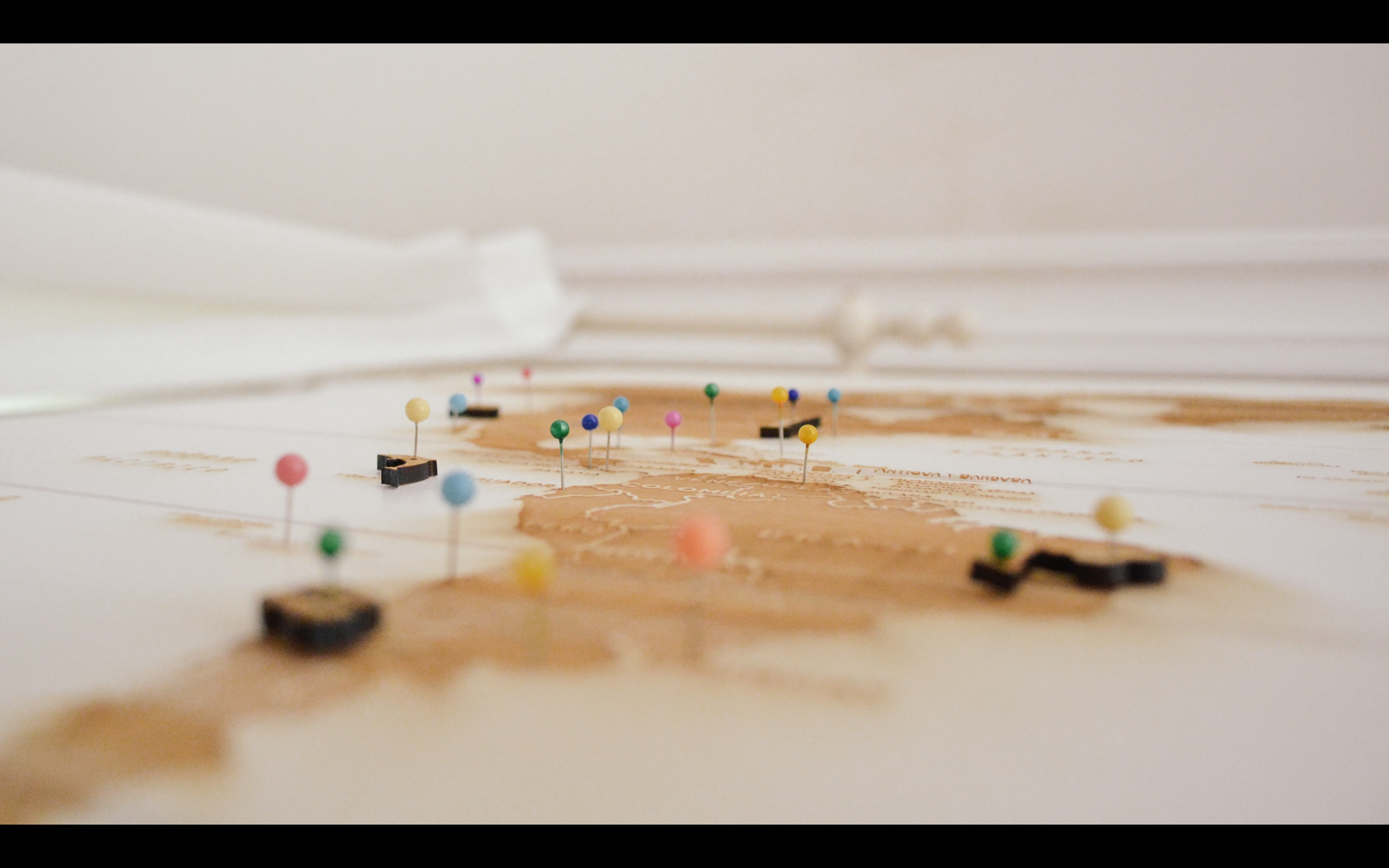
The library is a place? And the web is everywhere?
LIBRARY
As we move to talk about the word, “LIBRARY,” I want to share with you what happened when I tweeted out that Lewis quote. Twitterbrarians, edupunks, higher ed tweeps took no time at all to push back on it. Joe Murphy came back with, “The web is everywhere, given certain assumptions about what places matter.” Because of course the web is not everywhere (partially because the internet has physicality– lives in servers– as several folks pointed out, but also because digital redlining keeps the web from connecting whole communities– and sometimes whole regions of the world). And A. Michael Berman tweeted, “The library and ‘the web’ are so different conceptually that the comparison is just odd. It would be like saying ‘a tree is in one place and air is everywhere.'”
In The Academic Library and the Net Gen Student: Making the Connections (hey, it was 2007, I guess “NetGen” was the lingo?), Susan Gibbons writes, “If academic libraries are considered warehouses of information and academic librarians the gatekeepers of that information, then the Internet may indeed be a disruptive technology for academic libraries.” A warehouse is where things sit: a static repository, unchanging and pinned down. And gatekeepers, like guards in front of a medieval castle, protect the “collection” inside, a collection that is filled with items that are more like museum artifacts needing to be protected than like items ready to be shipped, sold, or traded. This is set against the internet, whose high rate of speed and seemingly ubiquitous presence associates it with living and breathing people, people who are breathing the technology that is everywhere. One is dead and past, one alive right now.
Are books dead? Are libraries dead? RETWEET IF YOU STILL THINK LIBRARIES MATTER. Blah blah blah.
I don’t want to argue about whether the internet has disrupted libraries. I don’t believe the web is everywhere. And Google is not like air.
“Google Search is conceived of as a public resource,” writes Safiya Umoja Noble in Algorithms of Oppression, “even though it is a multinational advertising company.” She elaborates:
Commercial control over the Internet, often considered a ‘commons,’ has moved it further away from the public through a series of national and international regulations and intellectual and commercial borders that exist in the management of the network… Beyond the Internet and the control of the network, public information– whether delivered over the web or not– continues to be outsourced to the private sphere, eroding the public information commons that has been a basic tenet of U.S. democracy.”
The web, whatever its romanticized heritage or democratizing utopic dream, is currently zoned for private profit, with “everywhere” being paywalled and monetized in ways that undercut the public good even as the technology is billed as politically neutral, unregulated, and open.
So what’s more interesting to me than whether Google could trounce a librarian in a smack-down (or whether libraries can add enough snack bars and media labs to make students think they have entered the Google headquarters) is how do the terms of the debate here shape what is possible for libraries? By associating libraries with the past, with guarded and dusty collections, with a provincial and conscripted sense of place, we rob them of the ability to engage in responsive growth and change. But we do this uncritically, since the past, collections, places– none of these are static or unchanging. What might be useful is thinking about how “place” can empower us to challenge the ways that the web is privatizing and work more effectively towards a learning commons that sustains the public good.
Before I started working on open education and higher education reform, I researched and wrote about tourist sites that center on American history. In particular, I wrote a book on Salem, Massachusetts, and the conflicting stories that shape how we remember the 1692 witch trials, and how those memories in turn shape the economy and culture of Salem and the United States. The research taught me how alive history is– how tied it is to our changing contexts that make us see primary source documents in new ways as time passes and new perspectives engage. The past is not really past, since how we encounter it is always mediated by our current lenses and investments. So when we relegate libraries to the past as if this staples them to a nostalgic and finite obsolescence, we don’t only denigrate libraries, we misunderstand history.
I think the same kind of thing is at play when we think about “place.” Sure, libraries have place or are places. Whether they have brick-and-mortar buildings or exclusively online portals, we think of libraries like trees (in a place) rather than like air (everywhere) (to go back to Michael’s metaphor). But place is not “one thing.” “Concord” is not one thing. In summer, you can stroll around Walden Pond and meet a guy dressed as Thoreau, complete with the hand-stitched clothing and the Thoreauvian convictions about walking, solitude, war, slavery. His performance is called, by those who engage in “living history,” interpretation. And of course, that is what he is doing: by using the artifacts left behind by and about Thoreau, he curates and creates until this contemporary interpretation of Thoreau can meet up with tourists on the shoreline of the pond. And this is not just how we come to understand Concord past; it’s how we encounter Concord now, as race and class and a thousand other identity lenses shape the material experiences and personal and social conceptualizations– many of them competing– that emerge of that town. Or any town.
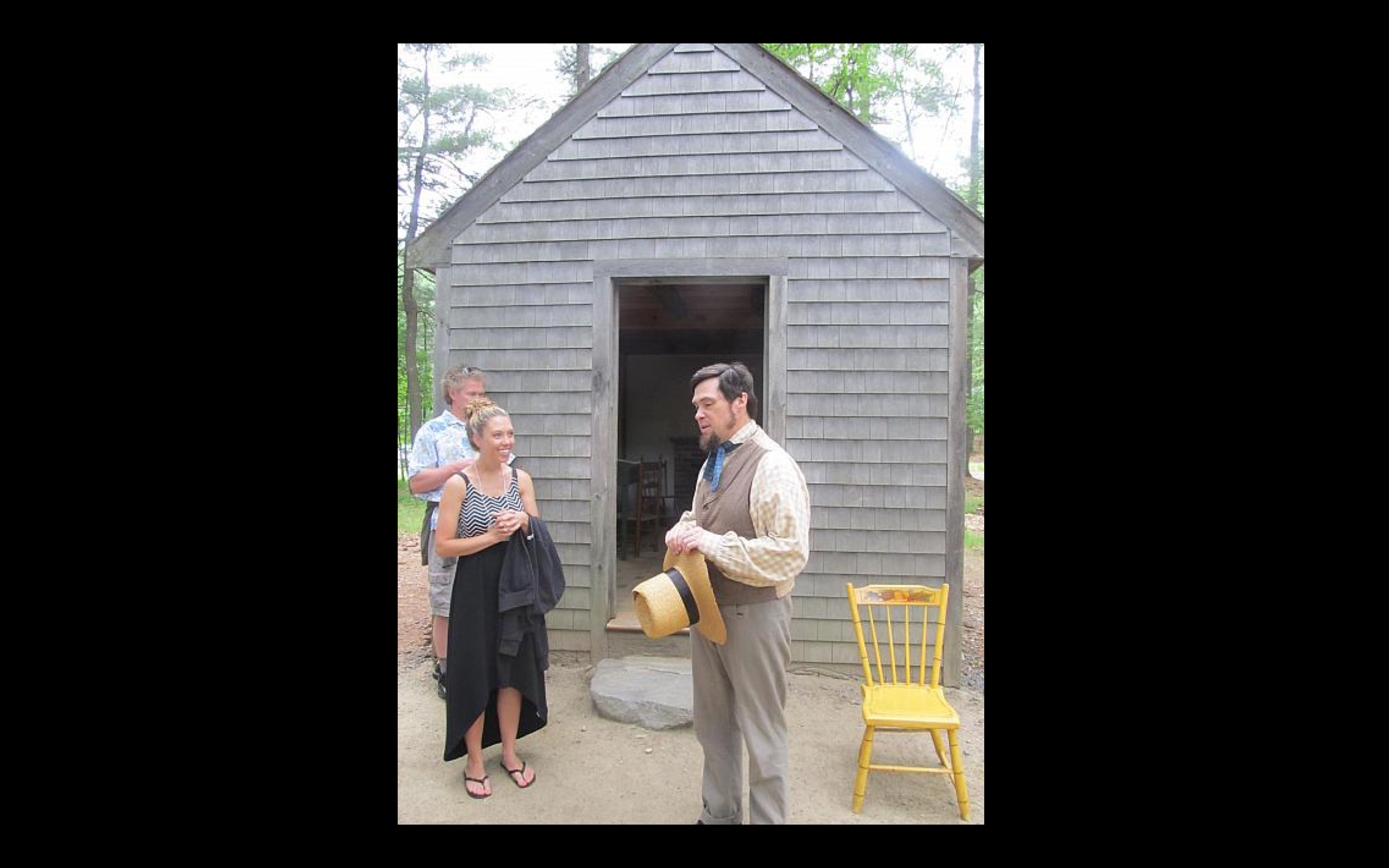
Richard Smith as Henry David Thoreau (photo by Mike Pueschel)
To think of a place that has “place” as somehow a relic of the past is to misunderstand both “place” and “past.” Both are dynamic, complex, and as current as any cutting-edge technology.
This is why I think the sense of “placeness” that libraries have is one of the ways that libraries will flourish in the future. Because place and history are all wrapped up together, and both are wrapped up in community, and that is pretty close to what a library is. The contexts of and relationships inside communities make communities specific in a way that “the internet” isn’t. And this specificity is their power, and it’s a power that libraries can claim, need to claim, now more than ever.
Donna Lanclos, an anthropologist and a folklorist who has been working for the last decade in academic libraries, writes so beautifully about how humanity, place, technology, and libraries intersect. She talks about how we appear human in our online interactions, how we add touches to encode our human authenticity into our online presence so that we will be trusted:
An example of this is when I Google to find the answers to my daughter’s chemistry homework so I can help her study. There are tons of sites that will give me the answers. But I always gravitate to the ones that start with a little chatter, “The first thing you want to do is think about what you already know about mass and density.” Why? I mean, a robot or calculator is probably more likely to give me the right answer to some 10th grade chemistry problem. But the value of the human interaction is greater than the value of the correctness. It can actually make a wrong answer feel right. Same thing works in history. Millions of tourists visit Salem, Massachusetts every year, but the events of the Salem Witch Trials mostly took place in Danvers, Mass, a few miles away; Danvers was called “Salem Village” in 1692, but the authenticity of its history isn’t enough to combat Salem’s mostly fake tourist sites that call to visitors with a siren song of enticing narrative.
I don’t really have a value judgement about this here. Some “humans” online are just A.I. bots. Some tourist sites have dubious ties to historical truth. What I do know, is that our stories, and our humanity, and our relationships– these are things that are so powerful that they bind us to our communities and our places in ways that move, enrage, fulfill, comfort, and challenge us.
Part of what this humanity entails is something more contradictory, rough-hewn, imperfect, and messy than anything that our algorithms have yet produced. Donna writes,
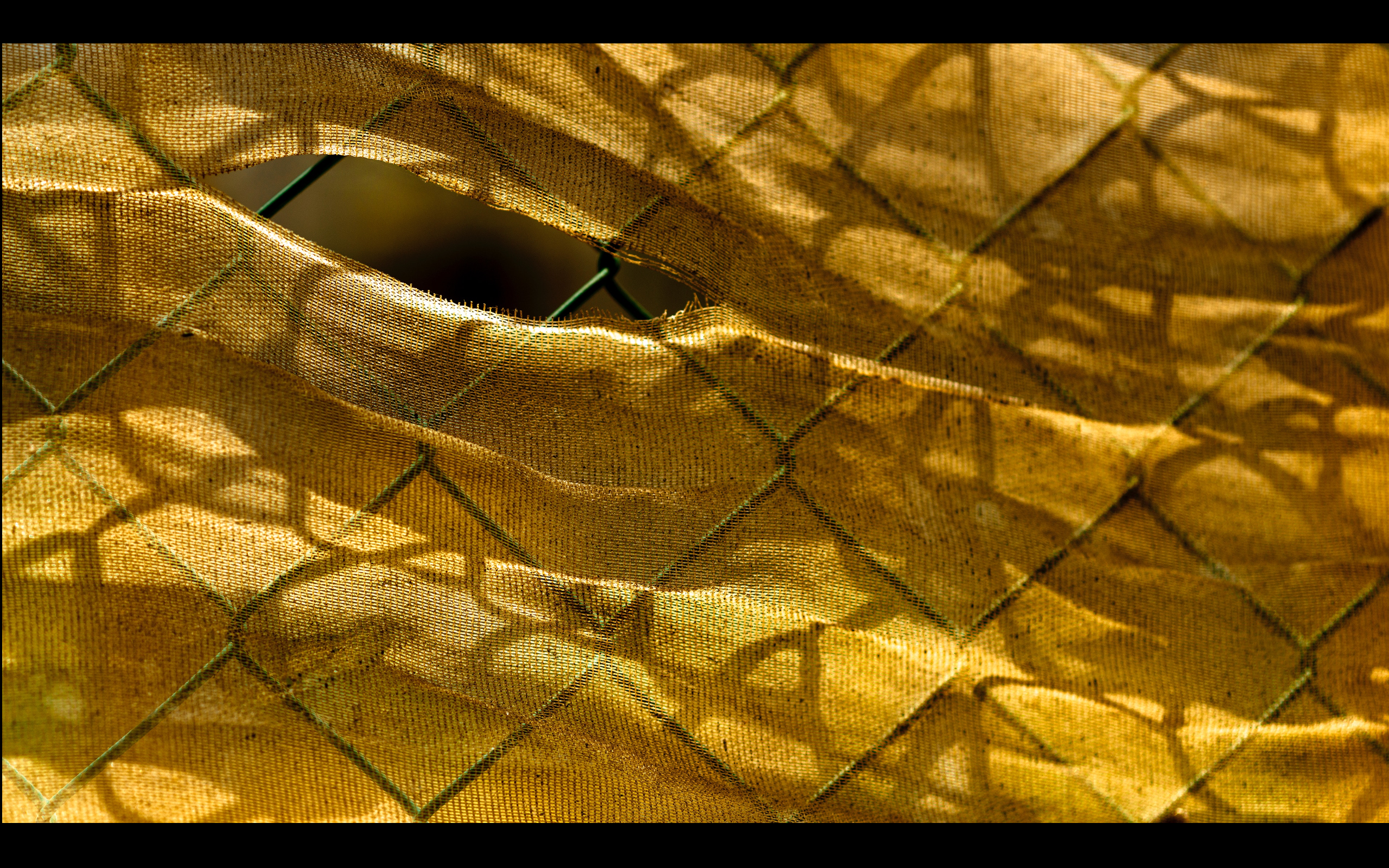
So I am trying to think about ways in. Ways in to places. Ways in to places that don’t eschew the complexity of their histories and how those histories inflect the different ways the places are experienced. I am thinking that helping learners see how places are made and remade, and helping them see that every interpretation they draw up–of their places and the places that refuse to be theirs– remake those places every hour.
This for me, is at the heart of open education.
Open to the past.
Open to the place.
Open at the seams.
Open to the public.
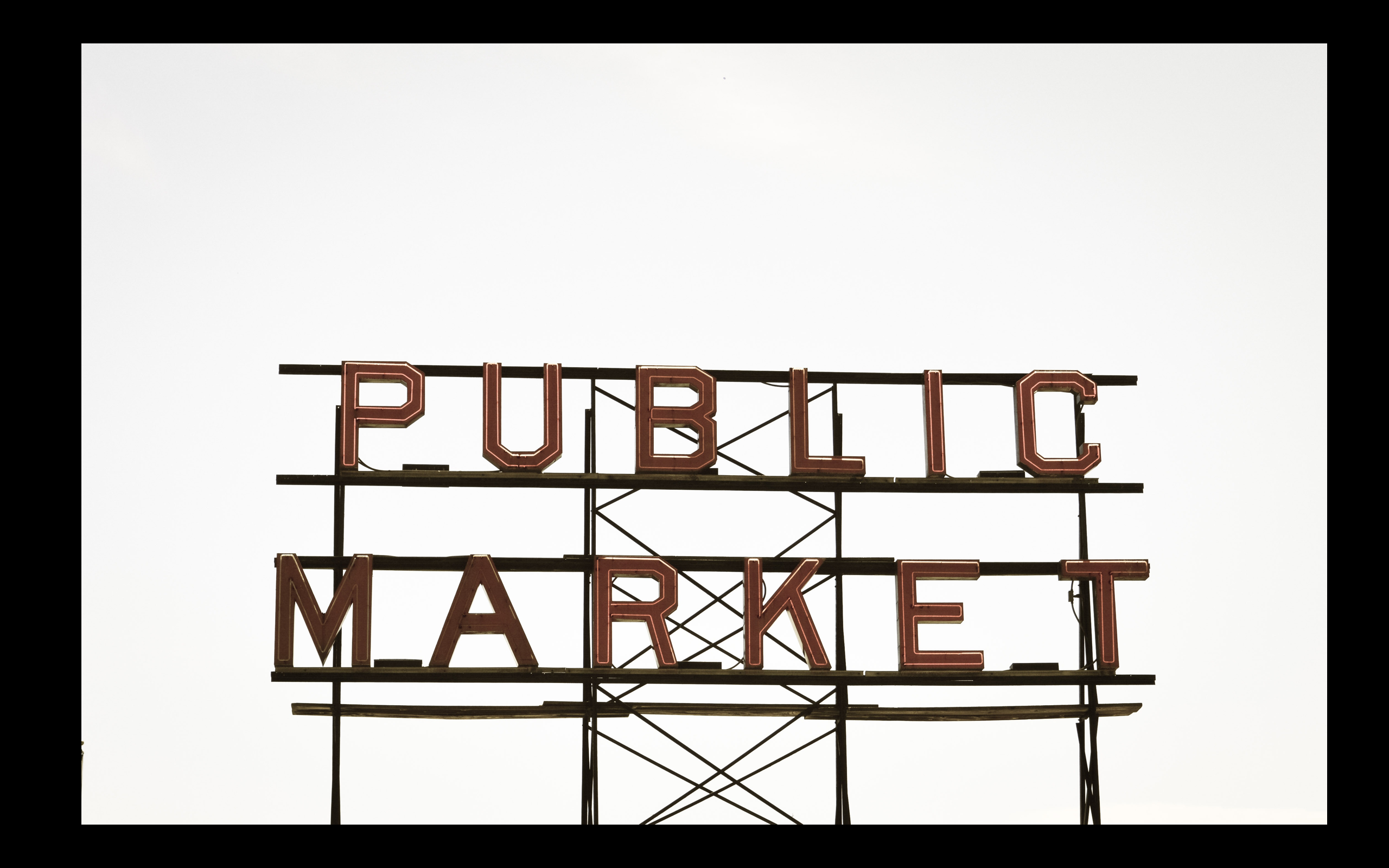
PUBLIC
So there is our final word, “PUBLIC.” You know, it’s not that easy to find out what a public library is. I googled it in preparation for this talk. It’s like a public museum. It might be open to the public, but does that make it public? But you know, it’s not that easy to find out what what a public university is. For example, mine. Which is in New Hampshire, the state which is proudly 50th in the nation for public funding of higher education. My college is about 9% state funded. Is that a public institution?
I think we may be starting backwards if we try to think of “public” in terms of funding. We need to think of public in terms of a relationship between the institution and the public (and the public good) and the economics of these relationships can be (will be! should be!) reflective of those relationships, rather than generative of them. What is the relationship of a public library or university– or a public university library– to the public? And could that relationship be the same for any college library regardless of whether the college is public or private?
Publics are places, situated in space and time but never pinned or frozen to either. Publics are the connective tissue between people, and as Noble points out, corporate interest in the web has attempted to co-opt that tissue and privatize our publics. A similar interest in education has attempted to do the same with our learning channels. Libraries exist in a critical proximity to the internet and to learning. But because they are places, that proximity flows through the people who make and remake the library by using (or not using) it. This is not a transcendent or romantic view of libraries. Recent work by folks like Sam Popowich and Fobazi Ettarh remind us that vocational awe is misguided, because libraries, like humans and the communities they bounce around in, are not inherently good or sacred. But this is not a critique of libraries. Or in other words, these messy seams where things fall apart, this is the strength of libraries because libraries are not everywhere; they are here.
I know this is an awful lot of abstraction wrapped up in some poetry and some deflection. So let me try to find some concrete practice-oriented ideas to leave you with.
You know textbooks cost way, way too much, and lots of that money goes to commercial publishers.
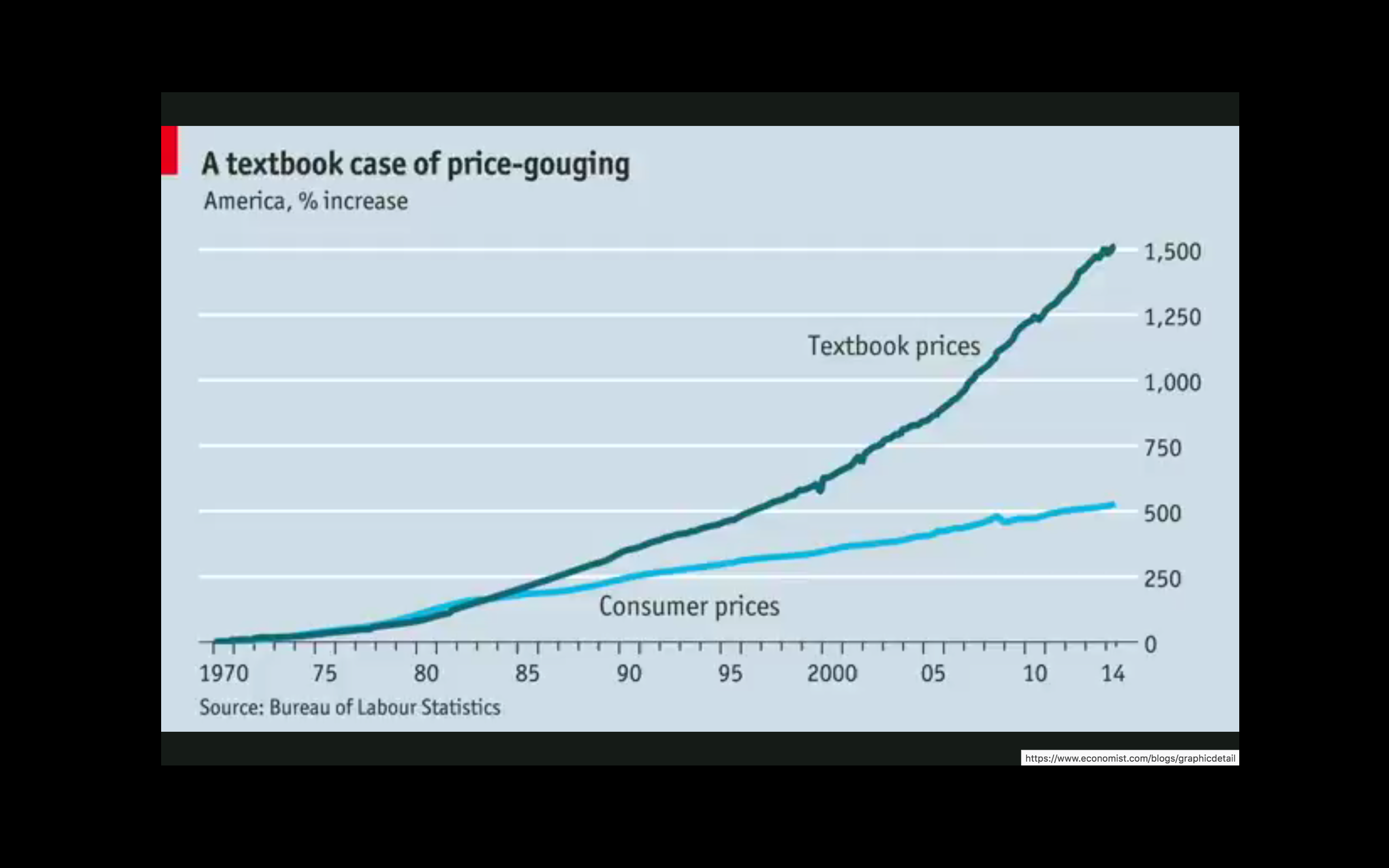
from The Economist, 2014
Students can’t afford textbooks. This contributes to them failing and dropping classes, which is bad for students and for colleges.
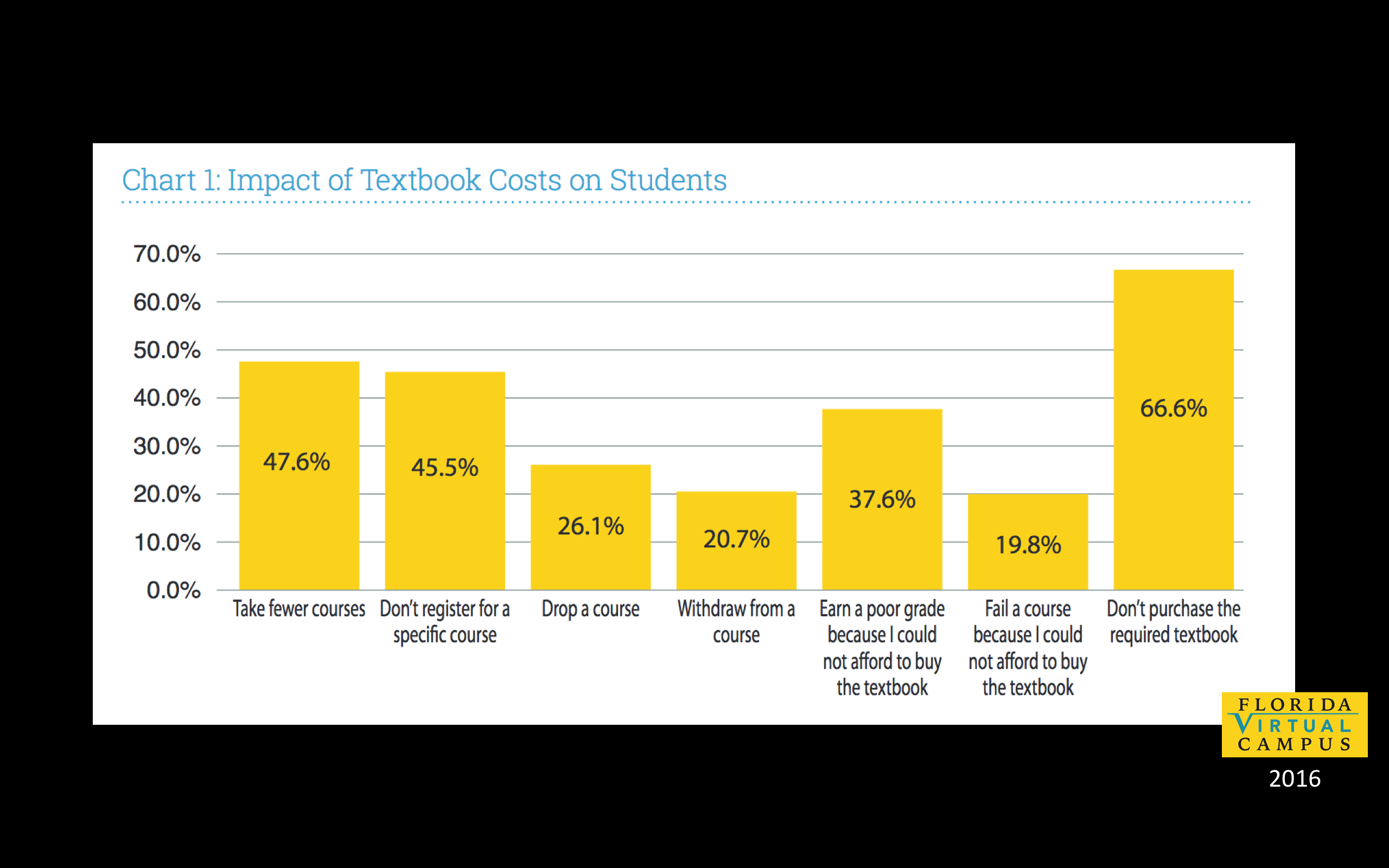
Florida Virtual Campus Study, 2016
Textbook costs are not incidental to the real cost of college. We can fix this problem by weaning off commercial textbooks and adopting Open Educational Resources. OER also lets us rethink the relationship between learners and learning materials; the open license lets us understand knowledge as something that is continually reshaped as new perspectives are introduced into the field.
We can engage in open pedagogical practices to highlight students as contributors to the world of knowledge, and to shape a knowledge commons that is a healthier ecosystem for learning than a system that commercializes, paywalls, or gates knowledge. And all of this is related to other wrap-around services that students need in order to be successful (childcare, transportation, food, etc), and all of that is related to labor markets, and all of that is related to whether students should be training for or transforming those markets.
As we focus on broadening access to knowledge and access to knowledge creation, we can think about the broader implications for open learning ecosystems.
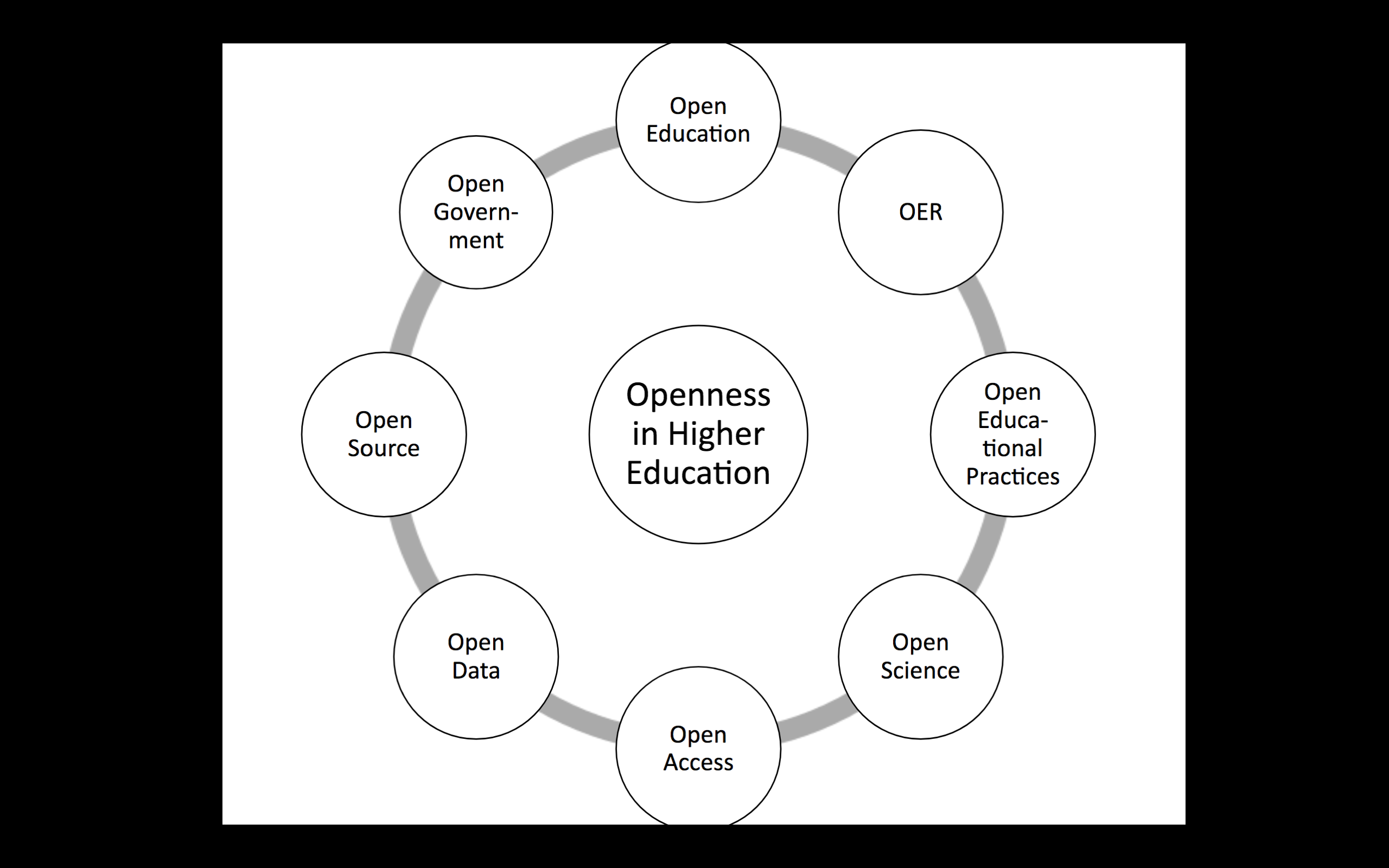
CCBY Jan Neumann http://bit.ly/NeumannCCBY
What kind of academic publishing channels do we need to assure quality and transparent peer review and open access to research by other researchers and by the public at large? What kinds of tools and platforms and expertise do we need to share course materials and research, and who should pay for them and host them and make them available? What kind of centralized standards do we need for interoperability and search and retrieval, and what kind of decentralization must remain in order to allow communities to expand in organic ways?
I’d like to see academic libraries stand up and be proud to be tied to contexts and particulars. I’d like to see them care about the material conditions that shape the communities that surround and infuse them. I’d like them to own the racism and other oppressive systems and structures that infuse their own histories and practices, and model inclusive priorities that center marginalized voices. I’d like them to insist that human need is paramount. Humans need to know, learn, share, revise. I’d like them to focus on sustainability rather than growth; the first is a community-based term, the second is a market-based term. Libraries work for people, and that should make them a public good. A public resource. This is not about how we are funded; it is about how we are founded and refounded.
Helping your faculty move to OER is not about cost-savings. You all know there are much easier ways to save money. They are just really crappy for learning. Moving to OER is about committing to learning environments that respect the realities of place, that engage with the contexts for learning, that challenge barriers that try to co-opt public channels for private gain, and that see learning as a fundamentally infinite process that benefits from human interaction. Sure, technology helps us do some of that better, and technology is central to OER. But technology also sabotages a lot of our human connections: infiltrates them with impersonating bots; manipulates and monetizes them for corporate gain; subverts them for agendas that undercut the network’s transparency; skews the flow toward the privileged and cuts away the margins inhabited by the nondominant voices– the perspectives that urge change, improvement, growth, paradigm shift. So it’s not the technology, just like it’s not the cost-savings, that matters. It’s not the new furniture or the Starbucks that makes your library the place to be. It’s the public that matters. It is a place for that public to be.
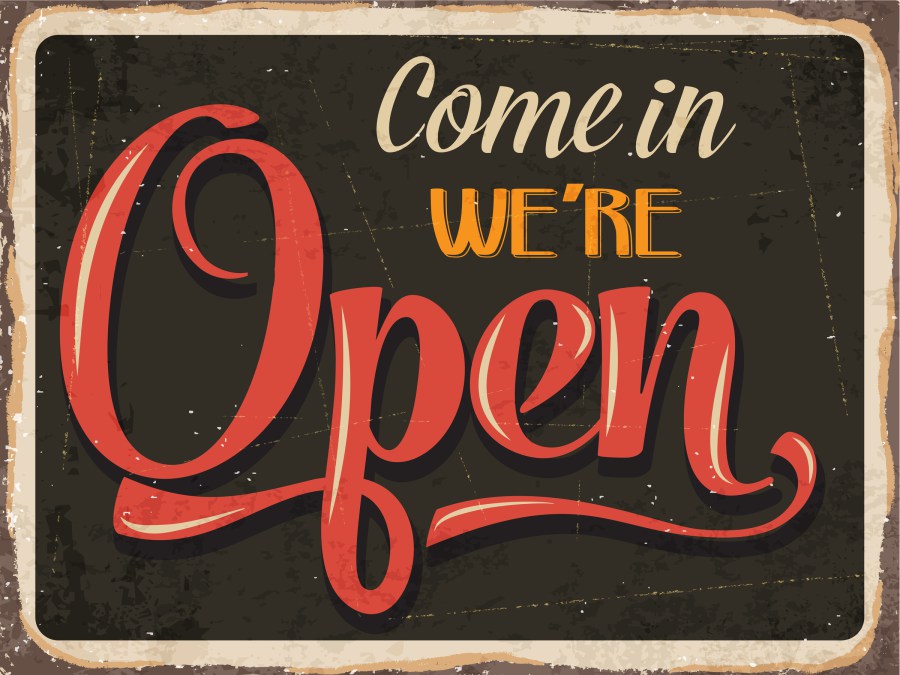
From Zion-Benton Public Library website
Libraries are places. Libraries, especially academic libraries, are public places. They should be open for the public. Help your faculty understand open in all its complexity. Help them understand the people that make your place. Help your place shape itself around the humans who need it.
Lots of people influenced this keynote in direct ways. Thanks to Jill Hallam-Miller of Bucknell University and PaLA for inviting me to give this talk. For help with the ideas here, I am grateful in particular to Donna Lanclos, Alan Harnum, Jess Mitchell, Safiya Umoja Noble, Audrey Watters, Kate Bowles, Chris Gilliard, Sara Goldrick-Rab, Celia Rabinowitz; and Karen Ahearn, director of the children’s room at the Concord Free Public Library: she was my boss when I worked there 30+ years ago, and she is still there, beloved since she began this job in 1975.
Please help me take these tentative threads and knit them into something more practical and coherent. Use Hypothes.is in the side bar to the right to annotate the text, or contribute your comments below. I would be grateful for your insights.
Bibliography
I made this bibliography with Zotero. It was my first time. It’s not perfect, but wow that was easy.
Duke, Lynda M., and Andrew D. Asher. “College Libraries and Student Culture: What We Now Know.” 1 edition, Amer Library Assn Editions, 2012.
Ettarh, Fobazzi. “Vocational Awe and Librarianship: The Lies We Tell Ourselves.” In the Library with the Lead Pipe. http://www.inthelibrarywiththeleadpipe.org/2018/vocational-awe//2018/vocational-awe/. Accessed 14 Sept. 2018.
Foerstel, Herbert N. Surveillance in the Stacks: The FBI’s Library Awareness Program. Greenwood Press, 1991. WorldCat Discovery Service, http://www.gbv.de/dms/bowker/toc/9780313267154.pdf. (I had a whole section on privacy that had to go, but wow this was an interesting read for how it resonated with current news.)
Gibbons, Susan. The Academic Library and the Net Gen Student: Making the Connections. American Library Association, 2007. WorldCat Discovery Service, http://search.ebscohost.com/login.aspx?direct=true&scope=site&db=nlebk&db=nlabk&AN=269618.
Lewis, David W. Reimagining the Academic Library. Rowman & Littlefield, 2016. WorldCat Discovery Service, http://search.ebscohost.com/login.aspx?direct=true&scope=site&db=nlebk&db=nlabk&AN=1228411.
Madison, Maria. “Concord’s Untold Revolution: Hidden in Plain Sight.” Wicked Local, http://www.wickedlocal.com/article/20100311/News/303119654. Accessed 13 Oct. 2018.
Noble, Safiya Umoja. Algorithms of Oppression: How Search Engines Reinforce Racism. New York University Press, 2018. WorldCat Discovery Service, https://nyupress.org/books/9781479837243/.
Popowich, Sam. “Transcendentalism, Social Reproduction, and the ‘Value’ of Libraries.” http://redlibrarian.github.io/article/2018/06/17/transcendentalism.html. Accessed 14 Sept. 2018.
Schlesselman-Tarango, Gina. “How Cute! Race, Gender, and Neutrality in Libraries.” Partnership: The Canadian Journal of Library and Information Practice and Research, vol. 12, no. 1, Aug. 2017. Crossref, doi:10.21083/partnership.v12i1.3850.
Woodward, Jeannette A. Creating the Customer-Driven Academic Library. American Library Association, 2009. WorldCat Discovery Service, http://site.ebrary.com/id/10482277. (I wish I had had time to leave in the quote from this book. It was a doozy.)
Should you need it, the slidedeck for the presentation is here: https://speakerdeck.com/actualham/the-library-is-open.








1 thought on “The Library is Open: Keynote for the 2018 Pennsylvania Library Association Conference”